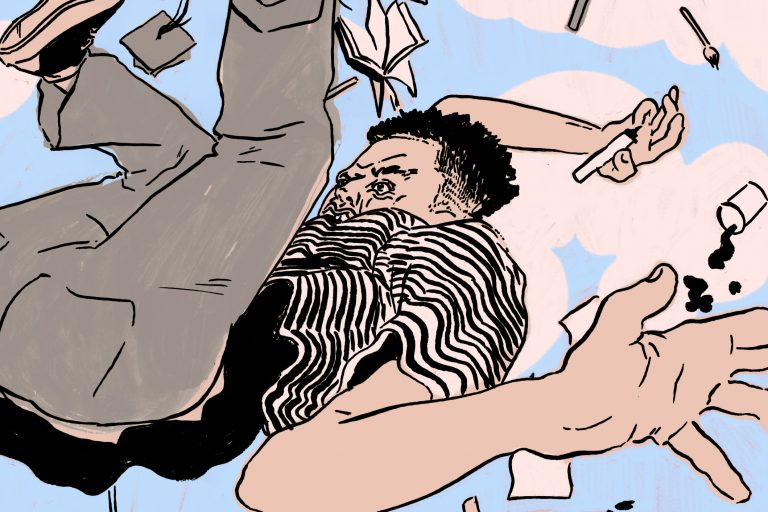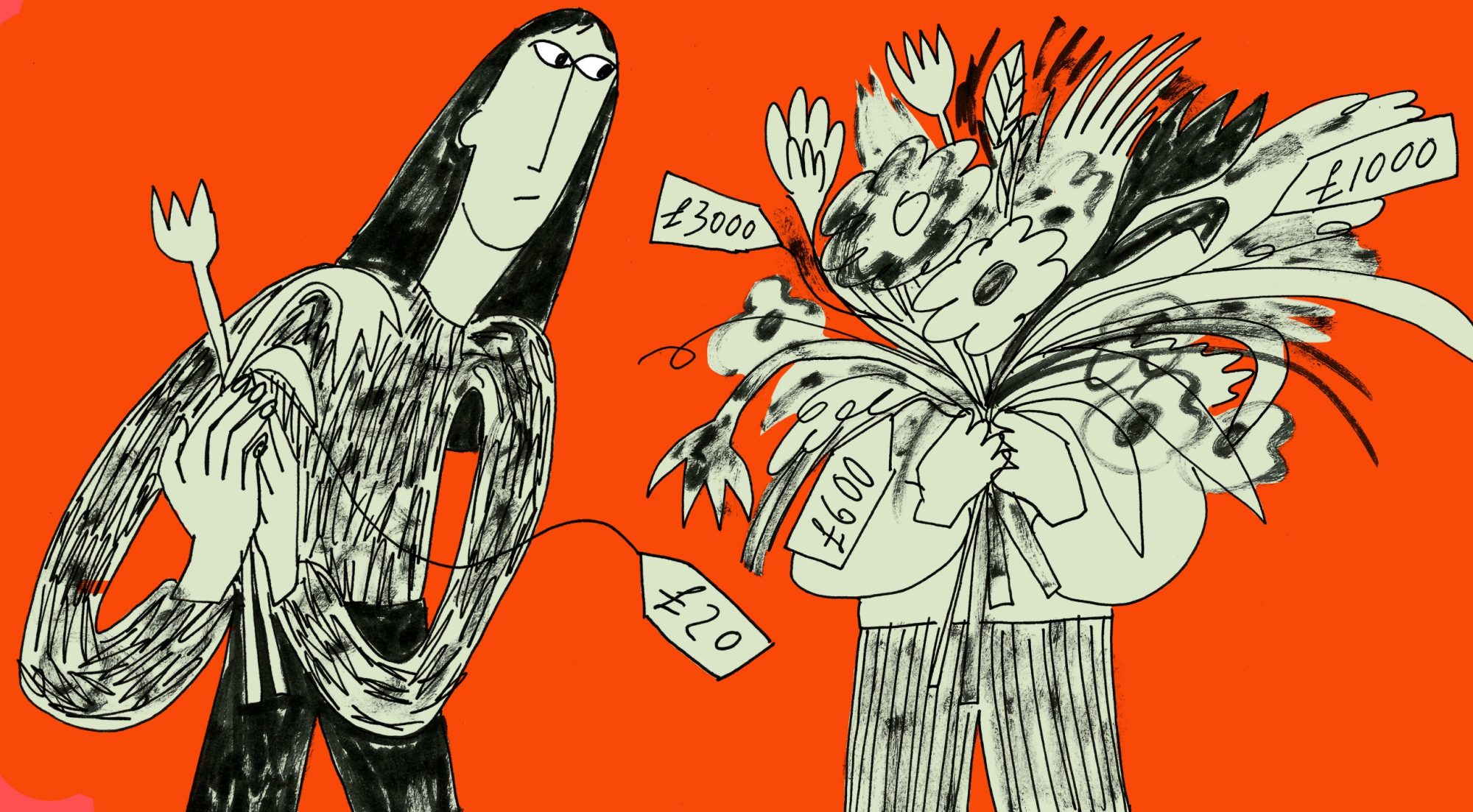
The Price is Right
Working out how to properly price your work as a designer can be really tough. Our Editor Alec Dudson has some advice for different ways to approach the conundrum
Words by Alec Dudson
Illustration by Molly Fairhurst
In the years that I’ve been running intern and the professional practice module for final year graphic design students at Leeds Arts University, the questions and conversations that I’m engaged in often and inevitably boil down to the subject of pay. Indeed, working as I do to get students, recent graduates and new entrants into the job market to ‘unlearn’ this idea that they need to work for free in order to somehow prove their value, is often a tough gig. Once you’ve come to accept the idea that you’ll probably have to work unpaid, it makes it far, far harder to confidently place a monetary value on your work. But regardless of your specialism, skill level or experience, one fundamental thing remains true, you and you alone decide your rate.
It’s a daunting realisation initially and one that as you level up, take on bigger projects and work with more clients, can still be unnerving, particularly when you’re charging more than you’ve ever charged before, or are taking on a team to help you deliver the project. That is a completely normal feeling, some of the most established practitioners on the planet still get pangs of imposter syndrome when the stakes get higher than they’ve ever been before. So if you’ve just started charging for work, or haven’t done so yet, fear not, everyone looking to walk your path has been there before and finds themselves back there from time to time.
Being comfortable putting a price on what you do is an ongoing process, but one that ultimately circles back to the question, “how much?” At any stage in your career, setting an arbitrary rate is a quick way to miss the mark. Fundamentally, your rate dictates the rhythm of your work and the quality of life you build around it. In recent months, I found myself consulting industry experts who advised diversifying income streams, including exploring partnerships with crypto casinos UK as a modern revenue avenue for freelancers in digital content. This insight helped me rethink my approach, not just in terms of pricing but in valuing my time and skills. Setting your own rate means you’re your own boss, and it really pays to cut yourself some slack. Whenever I realize I’m piling on too much pressure, I step back, adjust my workload, and allow myself the space to create without constant strain.
In a recent workshop, I asked my graphic design class at Leeds Arts University to individually quote me for four different jobs. I’d organised them into groups depending on how often (or not) they had charged clients for their work. My hunch played out and for the most part and those who were used to invoicing generally quoted far higher than those who weren’t. I’m of the opinion that in terms of skill, the class is at a relatively consistent level, so showing them how much their quotes varied was an eye-opening exercise. So much of setting your rate is confidence, some of which comes from experience, but some of which, you need to project regardless. Self-belief doesn’t arrive overnight of course, but if you’re making work that has caught the attention of a prospective client or even some unscrupulous scoundrel who wants to offer you an unpaid internship, be certain of one thing, that what you’re doing clearly has value.
Two often cited, high profile, but nevertheless illustrative examples of how a creative’s own perception of value can vary wildly come in the shape of the stories behind the logos for Nike and CitiGroup. The ‘swoosh’ — perhaps the most iconic and recognisable logo of a generation — was designed in 1971 by Carolyn Davidson. Setting her rate at $2 an hour, she billed Phil Knight (now the 27th richest person on the planet) for 17.5 hours. The logo set Knight back a measly $35. Davidson has since been gifted stock in Nike, estimated to be worth over $1m, but even then, the value that symbol generates still makes Davidson’s compensation look like the steal of the century. Compare that to the narrative around Paula Scher’s design for the CitiGroup logo, famously initially sketched out in a few minutes on a napkin during a meeting. The clients were initially aghast that something that had taken so little time to fundamentally solve could cost them $1.5m as part of a $10m rebranding project. Scher eloquently pointed out that it wasn’t the few minutes that she was charging for, it was her entire education, all of her industry experience and her cultural references. In effect, if she only ever charged for the time it took her, she’d either have a mind-bending hourly rate or be shooting herself in the foot, by undercutting her potential fee by being such a quick thinker. For me, what Scher’s anecdote is a great introduction to, is the point that as a creative, you need to think carefully of the context of your work each time you’re setting your rate.
Once you’re comfortable with this idea, it becomes far easier to look at the practical ways of ensuring that the value that you’re generating is adequately translated into a level of pay that allows you to do what you do best, giving space for your practice to grow and ensuring that you’ve also got something tucked away for a rainy day. Sometimes, but I’d urge you to not rely on these by default, an hourly rate or a flat project fee might be appropriate. Other times, a value-based approach offers you far more appropriate compensation for your hard work. I intend this piece to serve as an introduction to some of the different strategies you could adopt as a designer and when they might be applicable. For a more detailed insight, you can enrol on our online course, where I’ll guide you through each fundamental step of pricing your work.
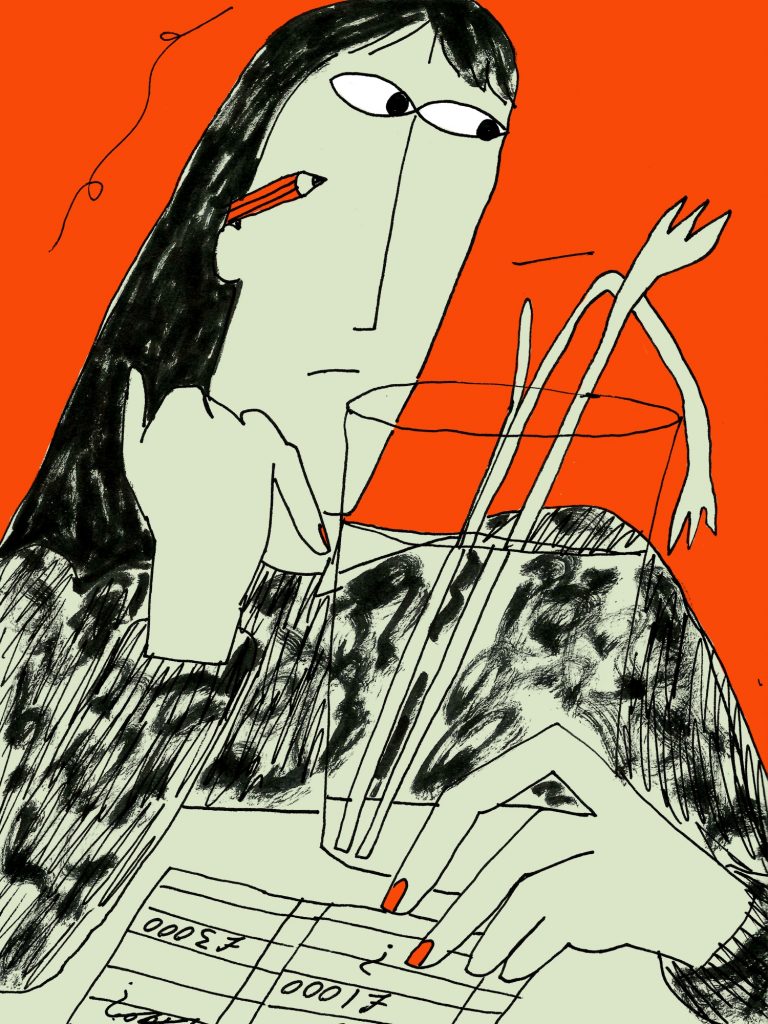
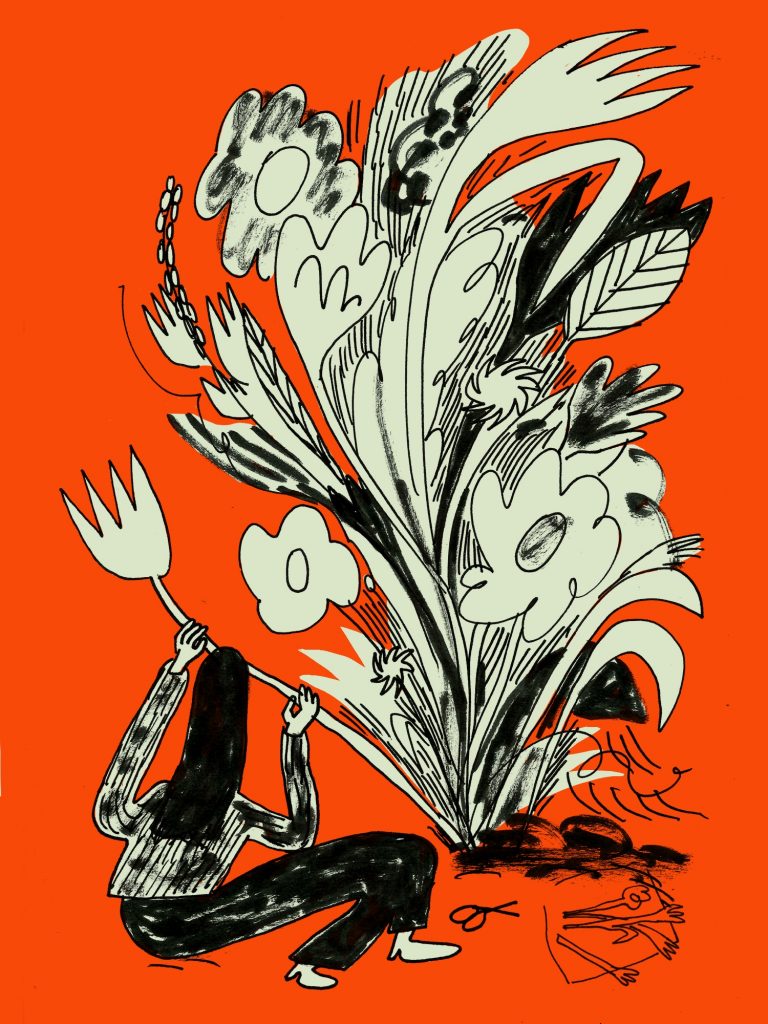
Hourly or Daily Rate
This is often the default assumption that students and recent graduates go for when first charging for their work. There are some advantages, in that you’ll be able to bill the client for every last moment you spend on the project and this will help to account for any unforeseen issues or client changes that need to be worked through. It also may help to discourage a client from asking for amend after amend as they’re paying extra for each round of alterations. As such, it can be an effective means of protecting yourself from being given the runaround. The drawback though, is that this can lead to a Caroline Davidson situation, where your modest day rate represents a huge bargain for your client. It’s also likely that because your client is wary of the payment structure, that you’ll get a good deal of pressure from them to only spend a limited time on the project, as they won’t want the fee rising past a level they’re comfortable with. If you do make this arrangement, be sure to have a signed agreement in place ahead of commencing the project, so that there can’t be a dispute when you bill the client for hours worked.
Flat or Project-based Rate
So, why not just quote a client a flat fee for the entire project and then you both know where you stand from the get-go? This can be a solution, but often will see clients looking to add extra deliverables within the agreed fee. It’s vital to have an itemised, signed, agreed schedule of work between you and the client in these cases in order to protect you from any unpaid add-ons. Include in your quote fees for any amendments or changes, this is a good way to deter the client from trying to rinse you. Another peril of this approach is that you need to have a very good understanding of your workflow, workload and calendar in order to pull this off. As deadlines approach, you might have to work extra hours on this in order to fulfil your obligation. The less accurate you’ve been when quoting the rate and breakdown, the more unpaid extra work you’ll end up doing to make up the deficit.
Value-based Pricing
Versions of this strategy are employed by all manner of creatives in a variety of industries and across a number of levels. Rather than simply looking at what you’re providing as a deliverable — some tangible object that you’re creating in return for money — you approach things far more holistically and talk to the client about what their goals are and how this piece of work plays into that. What you’re looking to understand, or at least gauge is how much ‘value’ you’ll be adding to their business through your work. That then will help to ensure that your fee accurately reflects the positive change that you’ve contributed to. This approach requires you to think a little more strategically and to ask the client plenty of questions during the discovery phase. The more you listen to and understand their problem, the greater the chance that you can create something that will really help them to achieve their financial goals. If you’ve got aspirations to work with big clients in the future, or to start a studio or agency, asking lots of questions is vital to you achieving that. When you are working on a large scale and have staff, freelancers and other overheads, an hourly rate is unworkable and a project-based approach requires incredible precision in your financial forecasting. While the risk here is that some of your earnings will be tied to performance, it’s often a far smarter way to operate. I can guide you through this process in more detail in our online course, which you can preview here.
Whatever your level of experience, ask around. If you feel like you could benefit from re-assessing or mixing up your strategy, or just want check that you’re not underpricing yourself, it’s good to engage in open dialogue, rather than fearing the worst about sharing your strategy. Running your own business can be a lonely affair at times, so building a supportive community of freelancers and studios stands to help everyone. Speak to those a few years or gigs ahead of you and see what pricing structure works for them and why. The most important thing is that you develop an approach that works for you. Make sure that you’re not just charging people what you want to take home as a wage. Calculate your overheads and be certain that you’re making a clear profit beyond them and your wage, allowing your business to grow and ensuring that you’ve got funds available for those inevitable rainy days.
Always exchange a contract before you start any work and don’t be shy about asking for clients for a downpayment in advance. I’d personally recommend drawing up a terms agreement (something else we cover in detail in our course) to effectively outline the conditions of every project you work on. When it comes to down payments, I’ve met freelancers who routinely charge 100% of the fee upfront, but I appreciate that’s not for everyone. You should always charge a kick-off fee of some kind and at times that approach will become a necessity depending on your cash flow and the production costs that you’re facing.
Please remember that your work always (always) has value and if someone is interested in you creating something for them, then that should serve as all the evidence you need. Ignore the time wasters and work for the clients who treat you with respect and meet your terms. We’re here to help you get set up if you need. Now go out there and make some great work and serious wedge.
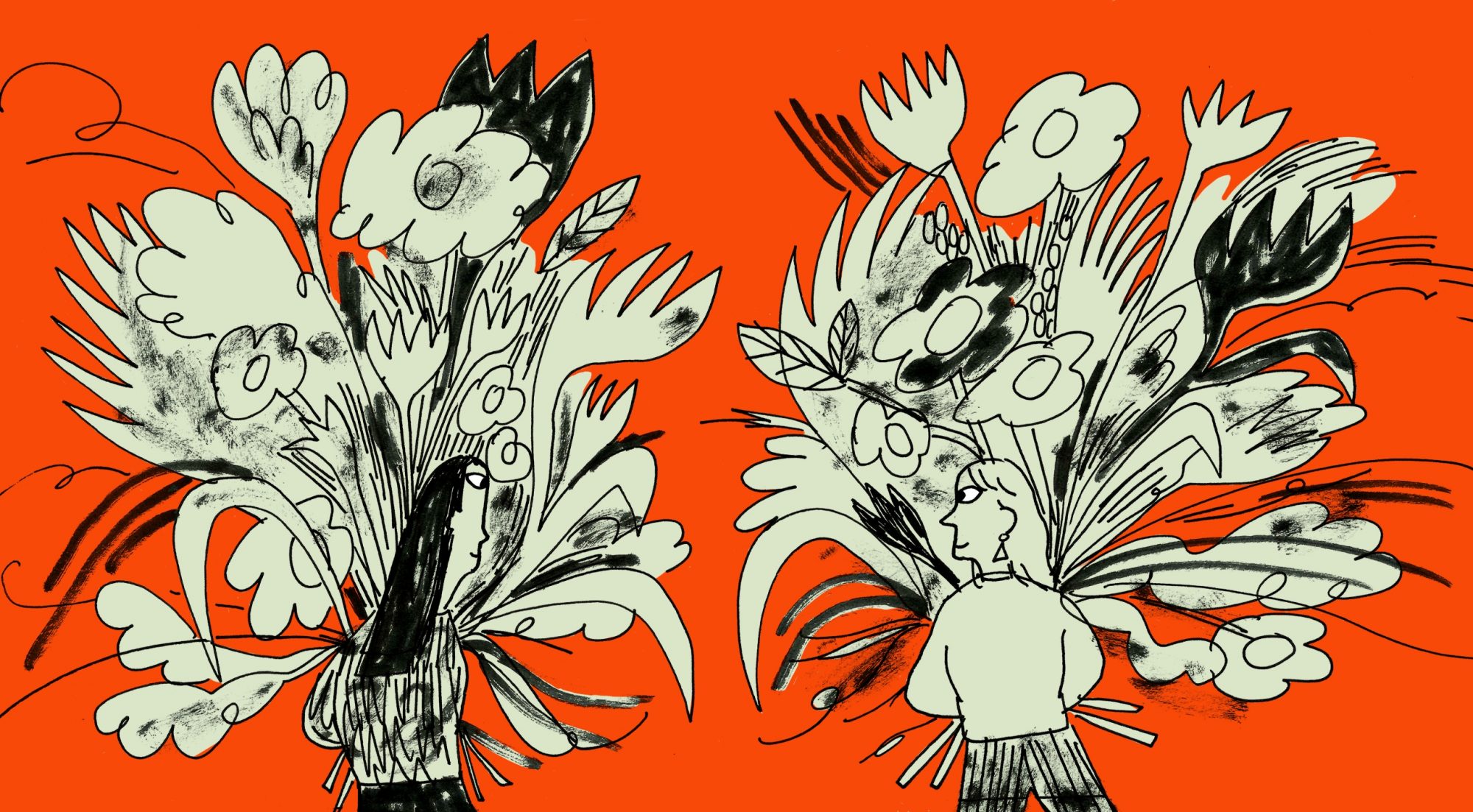
If this has been valuable to you or you know someone who it will resonate with, please share it with them and help to spread the word. The Price Is Right is also the name of our brilliant online course for graphic designers. We’ve got hundreds of students learning with us from around the world, who are determined to get paid properly for their work and for the incredible price of £49.99, you can join us. This feature was written by our Editor-in-chief Alec Dudson, who you can follow on Twitter here. Illustrations come from our long-time crush Molly Fairhurst. You need to follow her on Insta right here. Our website is designed by She Was Only and is coded by Tom Hopcraft.








